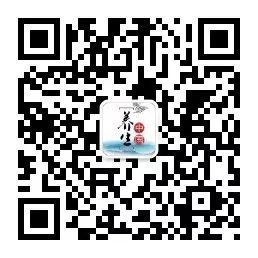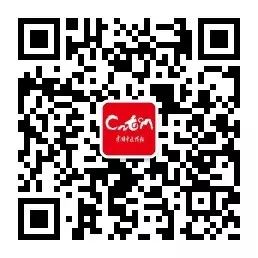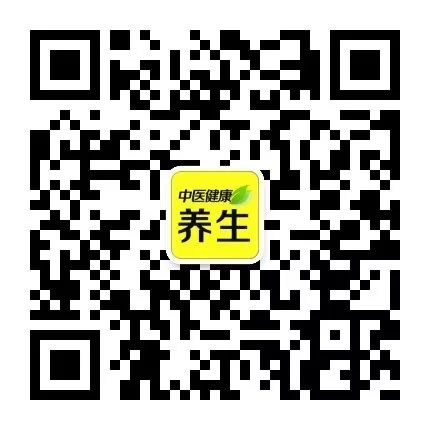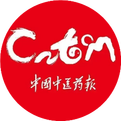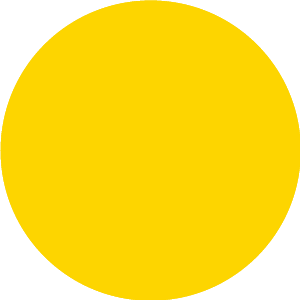
Click the blue text to follow us

The editor says: “The ‘Suwen: Discussion on Different Methods and Formulas’ records the six major technical systems of Traditional Chinese Medicine (TCM): acupuncture, moxibustion, bloodletting, herbal medicine, tui na (massage), and daoyin (guiding and stretching). Among these, acupuncture, moxibustion, bloodletting, herbal medicine, and tui na are external methods, working from the outside in. Daoyin is a self-directed internal method, working from the inside out. Daoyin harmonizes with other methods, mobilizing the body’s vital energy (zheng qi) to achieve maximum results with minimal effort. Historically, daoyin has been widely used in various stages of life preservation, health maintenance, disease prevention, treatment of existing illnesses, and rehabilitation, and has been valued by renowned physicians such as Hua Tuo, Ge Hong, Sun Simiao, Chao Yuanfang, and Liu Wansu throughout history.
Today, let’s learn the ‘Ancient Version of Yi Jin Jing Twelve Postures’ together! Scan the QR code below to watch the practice video! Don’t miss it!
Scan the QR code to watch
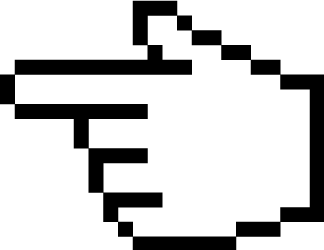
Daoyin is an Intangible Cultural Heritage with a Legacy
The ‘Ancient Version of Yi Jin Jing Twelve Postures’ is a classic of TCM daoyin studies. It is based on the philosophy of the ‘I Ching’ and guided by the theories of TCM meridians and qi and blood, achieving effects such as strengthening muscles and bones, consolidating essence and qi, nourishing the organs, and cultivating the mind through stretching and pulling muscles, expelling the old and taking in the new, and maintaining balance.
In 2014, approved and announced by the State Council of the People’s Republic of China, the ‘Ancient Version of Yi Jin Jing Twelve Postures’ was included in the traditional Chinese medicine diagnostic and treatment methods, becoming the first representative project of TCM daoyin as an intangible cultural heritage in China. Each posture of the ‘Ancient Version of Yi Jin Jing Twelve Postures’ targets specific meridians and nourishes corresponding organs. Additionally, the practice is not limited by location or time, showing significant effects in quickly relieving physical and mental fatigue, making it very suitable for modern people to learn and practice. Young people practicing Yi Jin daoyin can strengthen muscles and bones, promoting physical development. Adults practicing Yi Jin daoyin can help relieve physical and mental fatigue, prevent disease occurrence, and avoid chronic fatigue syndrome.

Yi Jin Daoyin for Health Protection
Preparation Posture Daoyin Method
The Preparation Posture Daoyin Method guides the Ren (Conception) and Du (Governing) meridians. The Du meridian governs the yang of the body, guiding the Du meridian to elevate yang qi; the Ren meridian governs the yin of the body, guiding the Ren meridian to lower yin qi.
The Preparation Posture Daoyin Method, through curling and stretching, allows the muscles to return to their grooves and the bones to align, enabling practitioners to achieve proper posture, harmonious qi, and flexibility. Additionally, the Preparation Posture Daoyin Method promotes the circulation of qi and blood throughout the body, reaching the extremities (fingers and toes) to warm up and invigorate the blood. Therefore, the Preparation Posture is also known as the warm-up method.
First Posture: Wei Tuo Presents the Pestle
The first posture of Wei Tuo Presents the Pestle guides the Taiyin (Hand) meridian, corresponding to the Taiyin Lung meridian. TCM daoyin places great emphasis on the regulation of the Lung meridian. The lungs govern the hundred vessels, control qi, and regulate the body. Guiding this posture can alleviate symptoms such as chest fullness, shortness of breath, anxiety, numbness and soreness in the shoulders, back, and upper limbs, inability to exert strength with both hands, tightness and pain, and rib discomfort.
Second Posture: Wei Tuo Presents the Pestle
The second posture of Wei Tuo Presents the Pestle guides the Shaoyang (Hand) meridian, corresponding to the Shaoyang Sanjiao (Triple Burner) meridian. The guiding phrase states: “Both hands support the heavens to regulate the Sanjiao.” Regularly practicing this posture can quickly relieve fatigue, enhance the qi transformation functions of the upper, middle, and lower Sanjiao, disperse accumulations in the organs, and prevent diseases before they occur.
Posture: Plucking Stars and Changing Dippers
The posture of Plucking Stars and Changing Dippers guides the Shaoyin (Hand) meridian, corresponding to the Shaoyin Heart meridian. TCM believes that the heart governs the spirit. If the heart is not nourished, it can lead to restlessness, palpitations, and insomnia. A scattered spirit can disrupt focus. Therefore, guiding this posture helps to enhance concentration.
For those engaged in long hours of mental work, practicing this posture can stretch the muscles and bones, relieve fatigue in the cervical spine, shoulders, elbows, wrists, and finger joints, and help avoid chronic fatigue syndrome.
Posture: Extending Claws and Spreading Wings
The posture of Extending Claws and Spreading Wings guides the Yangming (Hand) meridian, corresponding to the Yangming Large Intestine meridian. The Large Intestine meridian and the Lung meridian are interrelated. This posture mimics the form of birds. The Extending Claws and Spreading Wings posture, through clenching the teeth, pressing the tongue, raising the head, puffing the chest, drawing in the abdomen, and lifting the anus, assists the rise of yang qi, concentrating energy and spirit. Long-term adherence can make one feel light as a swallow. Guiding this posture can regulate symptoms such as dry mouth, nasal congestion, toothache, abdominal pain, diarrhea, and constipation.
Posture: Pulling the Tail of the Nine Cows
The posture of Pulling the Tail of the Nine Cows guides the Yangming (Foot) meridian, corresponding to the Yangming Stomach meridian. The Yi Jin Jing Twelve Postures utilize strength derived from the muscles, not brute force; this strength comes from the muscles. Regularly practicing this posture can eliminate the physiological phenomenon of having energy without strength and improve stomach function, preventing gastrointestinal diseases.
Posture: Nine Ghosts Pulling the Horse’s Blade
The posture of Nine Ghosts Pulling the Horse’s Blade guides the Shaoyang (Foot) meridian, corresponding to the Taiyang Bladder meridian. Guiding this posture can alleviate pain in the little toe, swelling and pain in the heel, stiffness in the neck, and inability to raise the arms, providing regulatory effects. It can also relieve weak qi transformation functions in the lower jiao and improve flexibility in the lower limb joints, alleviating pain in the ribs and the thoracic and cervical spine.
Posture: Three Plates Falling to the Ground
The posture of Three Plates Falling to the Ground guides the Jueyin (Hand) meridian, corresponding to the Jueyin Pericardium meridian.
The Pericardium and Sanjiao are interrelated. Although these two meridians have names, they do not have a physical form, yet they do have functional significance. The Three Plates Falling to the Ground posture is composed of eight small guiding movements, including rising, downward insertion, forward pushing, inward gathering, rotating the palm downward, twisting the wrist, clenching the fist, lifting, and concluding the posture. Its main function is to exercise muscle strength and enhance immunity. Regularly practicing this posture can alleviate chest tightness and distension, providing protective effects for the chest and abdomen.
Posture: Green Dragon Extending Claws
The posture of Green Dragon Extending Claws guides the Taiyang (Foot) meridian, corresponding to the Shaoyang Gallbladder meridian. This posture mimics the bionic movement of a dragon extending its claws, requiring smooth and gentle movements. The hands should guide slowly from the head down, pulling the shoulder blades down vertically to the outer side of the ankle, then rotating the body 180 degrees and lifting up. Guiding this posture can relieve tension in the waist, legs, shoulders, and neck, and is beneficial for the circulation of qi and blood throughout the body. TCM believes that the liver and gallbladder are interrelated. Guiding this posture has the effect of soothing the liver and draining the gallbladder. Combining it with the posture of the Tiger Pouncing on Food yields even better results. Long-term adherence to this posture can help regulate symptoms of anxiety and depression.
Posture: Tiger Pouncing on Food
The posture of Tiger Pouncing on Food guides the Jueyin (Foot) meridian, corresponding to the Jueyin Liver meridian. The Tiger Pouncing on Food posture is a bionic movement mimicking a tiger, closely related to the “Tiger Play” from the Five Animal Frolics created by Hua Tuo in the late Eastern Han Dynasty. TCM believes that the liver governs the muscles, and the largest muscle in the body is the zongjin (reproductive muscle). The ‘Suwen: Discussion on Atrophy’ states: “Excessive sexual activity can lead to the zongjin being overextended.” Regularly practicing the Tiger Pouncing on Food posture can help regulate excessive sexual activity and improve sexual function.
Posture: Bowing
The posture of Bowing guides the Shaoyin (Foot) meridian, corresponding to the Shaoyin Kidney meridian. The Kidney meridian and the Bladder meridian are interrelated. TCM believes that the kidneys open to the ears. When guiding this posture, both hands should cover the ears tightly to “close” them, and then bow down. When rising, gradually relax to “open” them. Regularly practicing this posture can strengthen the kidneys, bolster the waist, prevent tinnitus, and enhance hearing.
Posture: Dropping the Tail
The posture of Dropping the Tail guides the Yangming (Hand) meridian, corresponding to the Yangming Small Intestine meridian. The Small Intestine meridian and the Heart meridian are interrelated. The Dropping the Tail posture, also known as the Work Tail posture, involves swinging movements.
The Dropping the Tail Daoyin Method, through crossing the hands on the ground and hanging the tailbone to the cervical spine, facilitates the upward movement of qi and blood along the Du meridian. The heel striking the ground accelerates this upward process. Long-term adherence to this posture can help regulate symptoms such as ear pain, cervical spine pain, shoulder joint soreness, lower abdominal pain, frequent urination, and constipation.
Concluding the Posture
The concluding posture guides the Taiyin (Foot) meridian, corresponding to the Taiyin Spleen meridian. The Spleen meridian and the Stomach meridian are interrelated. The health-preserving guiding method states: “To regulate the spleen and stomach, one must lift one side.” This guiding posture can be performed before and after meals, and regularly lifting each side can help awaken the spleen and nourish the stomach, preventing diseases related to the spleen and stomach.
New Media Editor: Xu Jing
Content Collaboration: Add QQ 670426571
Business Cooperation: 18600799606
WeChat Submission Email: [email protected]
(The article focuses on viewpoints, policies, academic discussions, and TCM culture, and must be original for first publication. Please leave your name, organization, and contact information in the email.)
